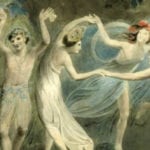 Music
Music  Music
Music  History
History 10 Less Than Jolly Events That Occurred on December 25
 Weird Stuff
Weird Stuff 10 Funny Ways That Researchers Overthink Christmas
 Politics
Politics 10 Political Scandals That Sent Crowds Into the Streets
 Weird Stuff
Weird Stuff Ten Bizarre Facts About The Doge Meme
 Our World
Our World 10 Ways Your Christmas Tree Is More Lit Than You Think
 Movies and TV
Movies and TV The 10 Coolest Stars to Set Sail on The Love Boat
 History
History 10 Things You Didn’t Know About the American National Anthem
 Technology
Technology Top 10 Everyday Tech Buzzwords That Hide a Darker Past
 Humans
Humans 10 Everyday Human Behaviors That Are Actually Survival Instincts
 Music
Music 10 Surprising Origin Stories of Your Favorite Holiday Songs
 History
History 10 Less Than Jolly Events That Occurred on December 25
 Weird Stuff
Weird Stuff 10 Funny Ways That Researchers Overthink Christmas
Who's Behind Listverse?

Jamie Frater
Head Editor
Jamie founded Listverse due to an insatiable desire to share fascinating, obscure, and bizarre facts. He has been a guest speaker on numerous national radio and television stations and is a five time published author.
More About Us Politics
Politics 10 Political Scandals That Sent Crowds Into the Streets
 Weird Stuff
Weird Stuff Ten Bizarre Facts About The Doge Meme
 Our World
Our World 10 Ways Your Christmas Tree Is More Lit Than You Think
 Movies and TV
Movies and TV The 10 Coolest Stars to Set Sail on The Love Boat
 History
History 10 Things You Didn’t Know About the American National Anthem
 Technology
Technology Top 10 Everyday Tech Buzzwords That Hide a Darker Past
 Humans
Humans 10 Everyday Human Behaviors That Are Actually Survival Instincts
10 European Countries That No Longer Exist
The 19th and 20th centuries were a period of unprecedented change in human history. In 1807, the Napoleonic Wars were raging; in 2007, smartphones were becoming a thing. No other era in human history comes close to matching this rate of change.
And in no other place was this change faster than in Europe. As technology evolved, the borders of nations shifted, and entire states rose and fell. The 20th century in particular saw the shattering of ancient kingdoms and the birth of many new states, some of which failed to make it to the modern day. Ideologies led to new experiments and disastrous wars, and the human race saw the highest sustained period of migration in history. Not all the countries which entered this crucible made it out the other side. In this list, we’re taking a look at ten European countries that collapsed during this formative time.
10 Austria-Hungary
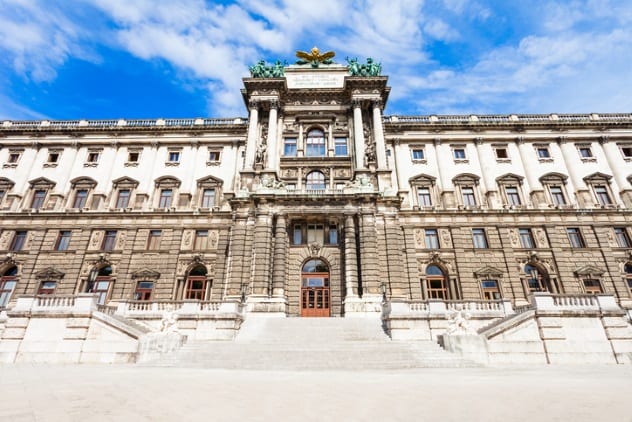
The Hapsburg monarchs had ruled Austria and Hungary since the 1500s. The two countries were governed in a similar way to England and Scotland before the Act of Union: While they shared a monarch, they remained independent of each other, with their own parliaments, budgets, and laws.[1]
This system was shaken by the fall of the Holy Roman Empire in 1806, when the Hapsburgs joined the countries together in the Austrian Empire. While Hungary was still nominally independent and still had its own parliament, it was now part of a larger state. This arrangement hardly suited the Hungarians, who agitated for reform several times over the course of the 19th century. One reformer, Istvan Szechenyi, shocked all when he addressed the Hungarian Diet in Hungarian for the first time in 1825, before proceeding to lay out a program of reform abolishing serfdom, introducing wage labor, and founding a national bank. His plans were ignored, but the Hapsburgs were rattled.
The empire expanded over the course of the 19th century, and by 1900, it controlled dozens of different ethnic groups, from Serbs in the south to Czechs in the north and many in between. In an era of rising nationalism, the government struggled to hold the empire together, despite its powerful army and huge industrial development. (At its height, the Austrian Empire had the fourth most developed industry in the world.)
Following the devastating Austro-Prussian War, the Hapsburgs reformed the country and renamed it Austria-Hungary, granting Hungary more powers in an attempt to appease the separatists. It did little to stifle the resistance. By the outbreak of World War I, Archduke Franz Ferdinand had developed a plan to radically reform the country into the United States of Greater Austria, where the country would be broken into 13 semiautonomous states roughly following cultural boundaries. Unfortunately, the archduke was assassinated before his plans came to fruition. Following Austria-Hungary’s role in World War I, it was dismantled by the Allies and broken into several smaller successor states.
9 Czechoslovakia
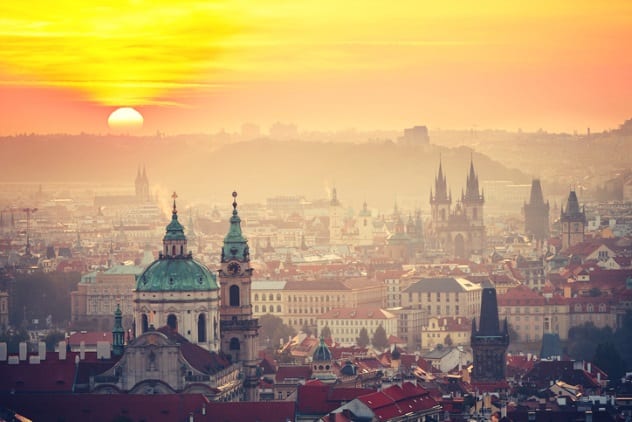
In many ways, Czechoslovakia was a country born out of necessity. The archduke of Austria took the Bohemian crown in 1526, and from then on, the Czech lands were a client kingdom of the Austrian monarchy. On the other side, Slovakia was conquered by the invading Hungarians around the year 1000, becoming a part of the Kingdom of Hungary. With the formation of Austria-Hungary, they were brought together in one country. The Czech lands contained over half of the industrial development of all Austria-Hungary, and this, alongside the forced Magyarization of the Slovaks, led to people in both places agitating for independence.[2]
These efforts were successful in 1918, when World War I came to an end. The Allies recognized their independence, and Czechoslovakia was born. The new country was widely successful, and at its height, it was the tenth most industrialized country on Earth. However, border tensions with Austria and Hungary remained unresolved, and the country was occupied and significantly reduced by the Nazis during World War II.
Following the war, aspirations for the country to be a bridge between East and West came to a bitter end with the communist coup of 1948. From then until 1990, the country was a satellite of the USSR, and communist ideology was implemented. Opposition to and deviation from Soviet control led to a government purge in 1952 and a clear break with Soviet policy in the Prague Spring of 1968, in which the Soviet military was forced to intervene. Further resistance came to a head in the Velvet Revolution of 1989, which forced the collapse of the communist government. For the first time since 1938, Czechoslovakia was once again an independent country.
It wasn’t to last. Rising tensions between nationalists on both sides of the country drove a wedge through the government. In particular, many Slovaks thought the country was too heavily dominated by the Czechs, who made up over two thirds of the population and who held the national capital. On the other side, some Czechs in the government considered the poorer region of Slovakia a drain on the country’s resources. The prime ministers of both agreed to the country’s peaceful partition in 1992.
8 The Papal States

Starting in the 700s and continuing for over 1,000 years, the Pope exerted secular as well as religious influence over the people of Europe, particularly in Italy. For those who lived in the Papal States, whatever their religion, the Pope was their secular lord. However, the Pope’s actual influence was minimal, and the states were largely under the control of independent princes with their own territories. For the most part, the Papal States existed as a mechanism for protecting the Pope.[3]
The Papal States really began to grow in influence during the Renaissance, particularly after the reign of Pope Julius II, who was nicknamed the Warrior Pope, from 1503 to 1513. In the 1800s, the Papal States became an increasingly old-fashioned and backward nation, refusing to acquiesce to many of the liberal and social reforms that swept Europe at the time. By 1870, the Papal States were the only country in Europe still continuing the practice of making young boys castrati, by castrating them before puberty so that they would retain their tenor singing voices.
Italian nationalism grew in the years after the Napoleonic Wars, and by the 1860s, few Italians opposed the Kingdom of Sardinia when it went on a military campaign to unite the peninsula. The newly formed Kingdom of Italy declared Rome its capital in 1861, but a French garrison protecting the city prevented them from conquering it. This garrison was recalled at the start of the Franco-Prussian War, and the city was conquered in 1870. Rather than surrender, though, the papacy insulated itself within the Vatican, and successive Italian leaders refused to conquer it. The standoff was finally resolved in the Lateran Treaty of 1929, in which the Papal States were formally abolished, and Italy recognized the Vatican City State.
7 East Germany
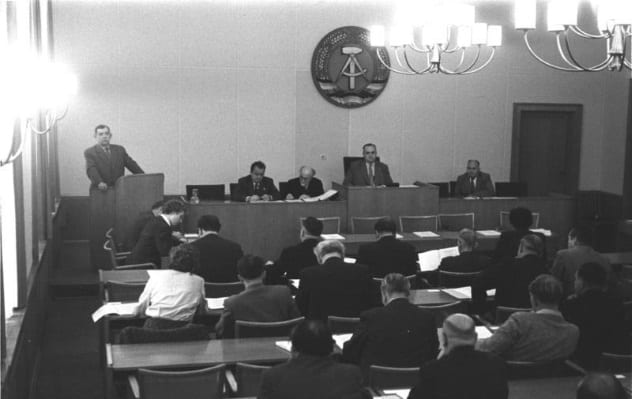
Following World War II, the UK, US, and USSR agreed to divide Germany and Berlin between them. Initially, this meant that Germany was divided into Soviet, US, UK, and French zones, but the British and American zones were merged in 1947. The French agreed to let their zone join the British and American zones in 1949, and the Federal Republic of Germany was formed.[4]
Later that year, the Soviets ceded control of their zone to the German communist party, the SED. The Democratic Republic of Germany (known to the West as East Germany) was born. In the early days, the ruling German communist party often went against policy decided in Moscow. This sparked concern among Soviet leaders, so the party’s more moderate members were purged. From then on, the SED was a thoroughly communist party—sometimes even exceeding the government in Moscow. Strikingly, the SED refused to accept the liberalization policies of Gorbachev in the 1980s, sticking to an orthodox Marxist line right until the end.
Society in East Germany was highly controlled. The SED enforced strict censorship, and Marxism-Leninism was compulsory learning in schools. Though unemployment and homelessness were low, and state-funded benefits such as entertainment and health care were very affordable, if not outright free, the restrictions on everyday liberty and low income disparity led to many well-educated people—particularly university graduates—fleeing to the West. This “brain drain” became so acute that it was one of the main contributors to the construction of the Berlin Wall, and the East German border was heavily policed.
East Germany remained cut off from the West for nearly 30 years before popular resistance forced the communist government to allow an election. The first truly free elections in East Germany since 1932 took place in 1990, in which the pro-reunification Christian Democratic Union led a victorious coalition. The country officially dissolved itself and joined the Federal Republic of Germany shortly after, bringing East Germany to an end.
6 Yugoslavia
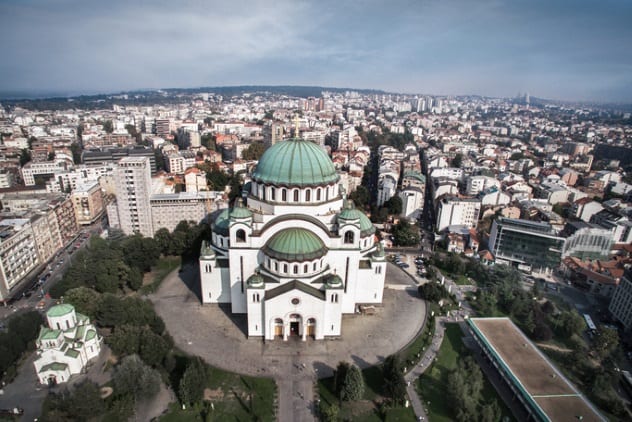
Though the concept of a united southern Slavic nation had existed since at least the 1600s, it was little more than a dream by the time it was suddenly created in the aftermath of World War I. Prior to the war, the nations of Yugoslavia had belonged to two old, powerful empires: Austria-Hungary and the Ottoman Empire. Following the Treaty of Versailles, both of these empires were broken up, and the southern Slavs (consisting of more than 20 ethnic groups) were pushed together in a single state.[5]
From the offset, the so-called “Versailles State” strained under the weight of nationalist tensions. Following political disorder, King Alexander seized power from the government in 1928 and pushed through a series of reforms aimed at uniting the country, including splitting the country into new provinces not based on historical borders and banning the use of non-Yugoslavian flags. The measures were widely unpopular, and Alexander was assassinated in 1934.
Yugoslavia had failed to find strong allies in the run-up to World War II and was invaded by Germany. The Germans split the country up, and the royals went into exile. By the time the country emerged from the occupation, nearly two million people had been killed in the unrest. The Nazis were eventually driven out by the communist-led Partisans, who aligned themselves with Moscow.
The country was thereafter dominated by Tito and his Partisans, who took the reins of power. In 1948, Yugoslavia officially broke its connections with Moscow. It became a core founder of the Non-Aligned Movement, which sought to oppose both the communist East and US-led West. Tito granted the nations of Yugoslavia many freedoms, including their own supreme courts, parliaments, and leaders, in an effort to prevent nationalist tensions.
Tito held the country together through reputation and will, and with his death, the country began to unravel. A number of issues, including the potential for Serbian dominance, the ethnic makeup of Kosovo, and the status of minority ethnics living in different states, led to irreconcilable differences between Yugoslavia’s devolved governments. These came to a head shortly after the fall of the Soviet Union, when the dominant communist party broke up. With the sudden lack of a federal government, these burning issues boiled over into outright conflict, leading to the brutal Yugoslav Wars.
5 The Ottoman Empire
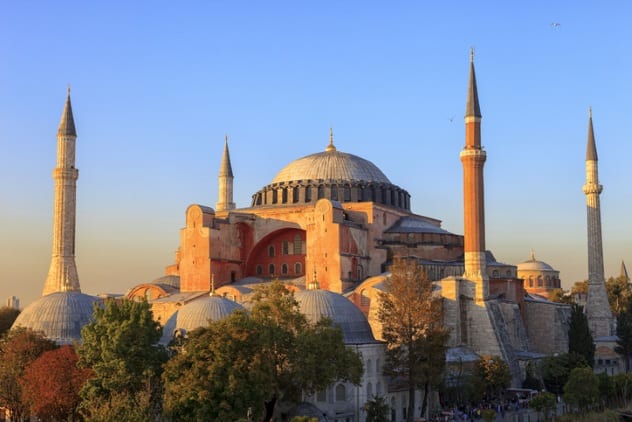
The Ottoman Empire was one of the longest-lived empires in human history.[6] First formed by seminomadic Turks in the 1300s, it dominated the Middle East, North Africa, and Southeastern Europe throughout the 1600s and 1700s. Its armies even reached the gates of Vienna in Austria. By the dawn of the 20th century, however, it was overextended, outdated, and struggling to control its hundreds of ethnic groups in an age of rising individual education and national identity.
The empire had been struggling to keep up with the other great powers of the globe since the 1800s but had been able to rely on its powerful alliances to maintain its position. In particular, the empire was able to defeat Russia in the Crimean War during the 1850s because of support from France and Britain. By 1900, however, the country was diplomatically isolated and very vulnerable. It looked toward the new state of Germany, very powerful but similarly isolated, as a way of forming a new bloc that could resist the Triple Entente. This bloc became known as the Central Powers.
Unfortunately, these two major factions found themselves at war in 1914, and by 1918, the Ottomans knew they were on the losing side. The empire was also struggling with rebellions and resistance in Arabia and had resorted to ethnically cleansing its Armenian and Greek regions to suppress resistance. Just as recently as 1909, the country had gone through a significant democratic reform that looked as though it would rejuvenate the state. By 1918, it was all but finished. The Allies officially partitioned the empire following World War I, leaving the empire with a much-reduced territory centered around modern-day Turkey. The death blow came from within Turkey itself, as the Young Turk movement pushed the sultanate out and declared Turkey a secular republic.
4 The USSR
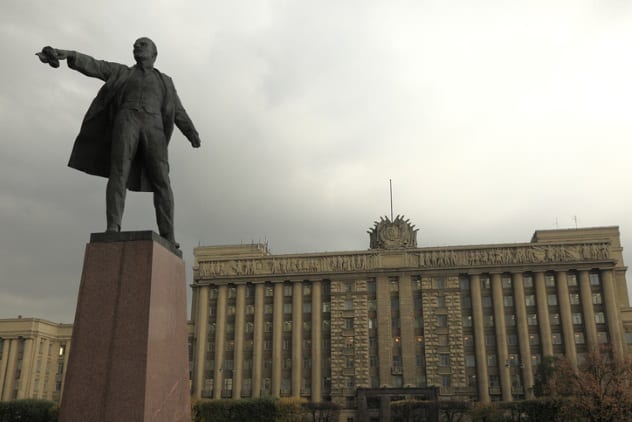
In 1917, frustrated with the state of Russia and the slow pace of reform, a band of rebels set out to reshape the country. These were the Bolsheviks. Following an internal power struggle, they had taken control of Russia. Their influence extended to the surrounding states by 1922, and the Soviet Union was born.[7] Founded as a communist state, the new government’s goal was to implement true equality for every man or woman, regardless of birth.
This dream began to founder shortly after its beginning with the death of its first leader, Vladimir Lenin, in 1924. Josef Stalin inherited the state. He was a man who many, Lenin included, considered to be dangerous both to communism and the USSR. Over the next three decades, fantastic achievements in industrialization, technology, and national identity were overshadowed by political crackdowns, extreme authoritarian control, and economic and organizational problems that ultimately led to a famine which killed millions of people. Stalin’s extreme interpretation of Marxism led to the birth of a state which could rightfully be considered one of the most influential, and controversial, in human history.
The era following Stalin’s rule was arguably the USSR’s most successful, a time when its technological achievements (particularly in the Space Race) reached their heights and when the country was shaking off its previous political restrictions and becoming more open to the world. Quality of life improved and led to something of a golden age which is viewed with nostalgia by some Russians today. This wasn’t to last, however, and the Union entered a period of stagnation in the years after Khrushchev’s departure in 1964. Facilitated by a growing desire for liberty among its people and accelerated by the USSR’s failure to keep up with the West economically, increasingly widespread political and economic crises led to the decision to partially liberalize the state. By 1991, however, the situation was no better, and one by one, all of its members declared independence.
3 Prussia
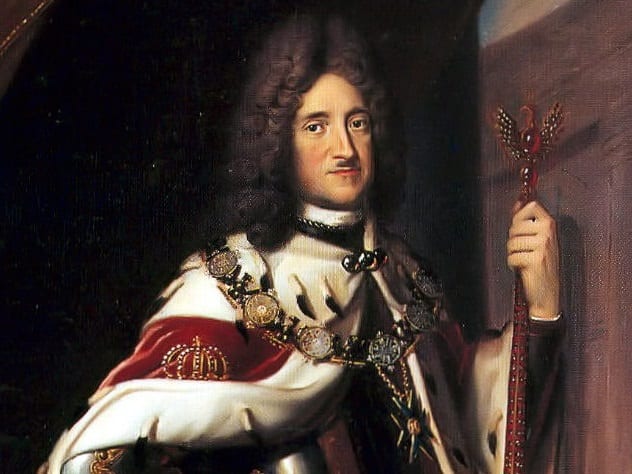
Prussia had its roots in the religious state established by the Teutonic Order in 1308.[8] Following their conquest of the pagans who inhabited Prussia, this new German state attracted many Polish and German immigrants—so many, in fact, that they had all but displaced the original Old Prussians within a few decades. The Teutonic Order ultimately collapsed, and Prussia was absorbed by Poland around 1410.
The region remained dominated by German settlers, however, and it was eventually inherited by the leader of Brandenburg, Frederick I. While he was still technically a Polish vassal in Prussia and a German vassal in Brandenburg, Frederick began building his own state out of his possessions, including his own bureaucracy. Crucially, he established a powerful and very disciplined army, which Prussia later became famous for. Following the Thirty Years’ War, Prussia and Brandenburg became an independent state in 1657. From then on, it was one of the great powers of Europe, if not the world, victorious in wars throughout the 1700s and going on to decide the results of the Napoleonic Wars, the Austro-Prussian War, and the Franco-Prussian War, each of which shaped the borders and history of continental Europe. Prussia reached the height of its power in the wake of the Franco-Prussian War. It used its influence to form first the North German Confederation and then the German Empire in 1871. It was the largest state in the new country, covering around half of Germany’s total area.
Prussia was always heavily conservative, but it became a bastion of democracy and left-wing thinking after Kaiser Wilhelm abdicated in 1918. Fears that the Prussian state could be used to launch a communist uprising led Chancellor Von Papen, under the influence of Hitler, to launch a coup, expelling the Prussian government and seizing it for the Reich. Hitler’s eventual rise to power six months later was made much easier by his possession of Prussian resources. Following World War II, Prussia was abolished for good in 1947 as one of the Allies’ war demands.
2 The Kingdom Of The Two Sicilies
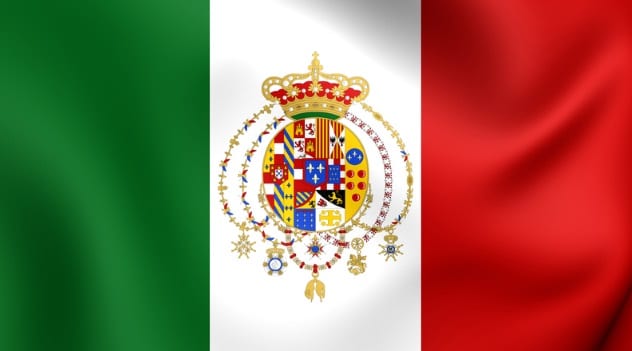
The Kingdom of the Two Sicilies existed in various forms from the Early Middle Ages to 1860, sometimes as one kingdom, sometimes as two—Sicily and Naples.[9] For most of its history, it was tied to the royal families of Spain and Aragon, who often gave the kingdom to their heirs or close relatives. The two kingdoms of Sicily and Naples were officially united in 1816 as the Kingdom of the Two Sicilies under Ferdinand I, after a brief time as the Parthenopaean Republic under Napoleon.
For the majority of its existence, the Two Sicilies was a heavily agricultural country in which the Church had an enormous amount of influence—owning up to half of the country’s total land. The country did have a burgeoning industrial sector, however, particularly in the areas of arms manufacturing and processed foods. When the Italian Unification came, it hit Two Sicilies hard: The combination of northern migration and neglect by the new government led to the widespread collapse of industrial development.
The absolute monarch style of the Bourbon dynasty was never popular, and there were three popular uprisings against the monarchs between 1800 and 1848, when Sicily became independent for over a year. The advanced constitution it adopted, with dramatic liberal reforms and a plan for a united Italy, was a hint of what was to come in 1860, when Garibaldi and his volunteers invaded from Sardinia and conquered the kingdom, with help from Britain. Two Sicilies was absorbed by the new Kingdom of Italy in 1861. Despite its relatively short history, it was the home of many firsts, including the first railway in Italy, the first volcano observatory in the world, and the first suspension bridge in continental Europe.
1 The United States Of The Ionian Islands
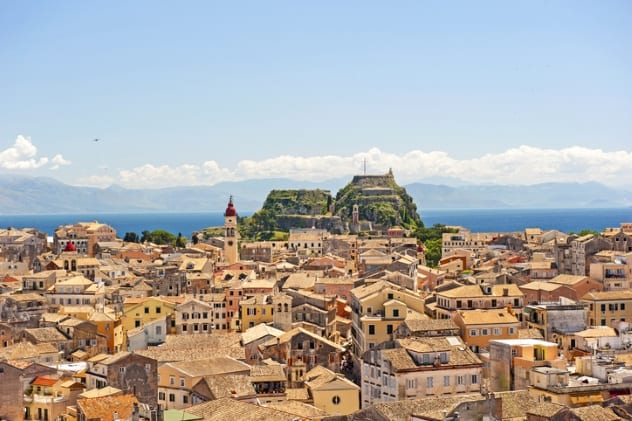
The United States of the Ionian Islands was a tiny country compared with the others on this list, but it was important in the history of Greece because it was, when it was created in 1815, the first time any Greeks had governed themselves in 400 years.[10]
The independence of the Ionian Isles stretched back to 1800, when the semi-independent Septinsular Republic was created under the governance of Russia and the Ottoman Empire. The islands were seized by the French in 1807 and then made a protectorate of Britain in 1815 at the conclusion of the Napoleonic Wars. While the islands were technically a satellite of the United Kingdom, they were self-governing and had their own senate. The senate was made up of elected representatives from each of the seven islands of the republic. With support from the British government, the islands’ infrastructure developed quickly, with new road links being built alongside new power plants, a palace, an aqueduct, and a university—most of which were dismantled or fell into disrepair when the islands merged with Greece.
Despite an anti-British riot which gripped the country during the year of European unrest in 1848, relations between the Ionian Isles and Britain were largely positive. With the crowning of a new Greek king in 1864, the British were keen to bolster his reign and ceded the islands to him, bringing the republic’s history to an end.
Read about more European history on 10 Daring Assassinations That Shocked Medieval Europe and 10 Dramatic Events From Europe’s Longest War.



